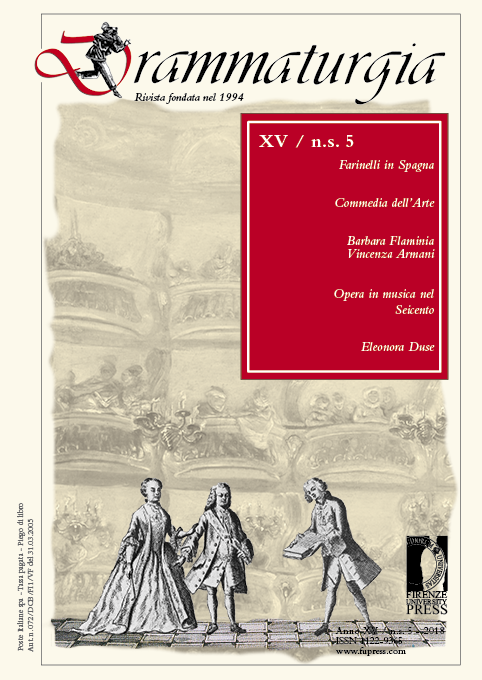Published 2020-05-15
Keywords
- Circus,
- Commedia dell’Arte,
- Nineteenth and Twentieth-century popular theatre,
- Pantomime
How to Cite
Abstract
The varied universe of the performances of Molier circus and the Nouveau Cirque finds its synthesis in Félicien Champsaur’s pantomimes, Les Éreintés de la vie (Circus Molier, 6th and 11th June 1888) and Lulu (Nouveau Cirque, 1st October 1888), not just as spectacular form of entertainment, but also as awareness of the fin de siècle anxieties. These pantomimes attest, on the one hand, Champsaur’s style which, in line with the principles of the Cercle Funambulesque, is aimed at the recovery of the Commedia dell’Arte masks not only in a thematic but also in a critical key in light of the debates of the period; and on the other, reveals the hybrid nature of the repertoires of these circuses able to cross acrobatics and dramaturgy. The shows of Molier circus and Nouveau Cirque are not, indeed, meant just to raise excitement through aerial and equestrian numbers, but also to entertain the audience with dramatic performances. Let us think about the numbers of the clowns Foottit and Chocolat’s, based on complex improvised schemes, which evoke the Commedia dell’Arte lazzi and, at the same time, inaugurate a new clownery tied to the criminal instinct.


